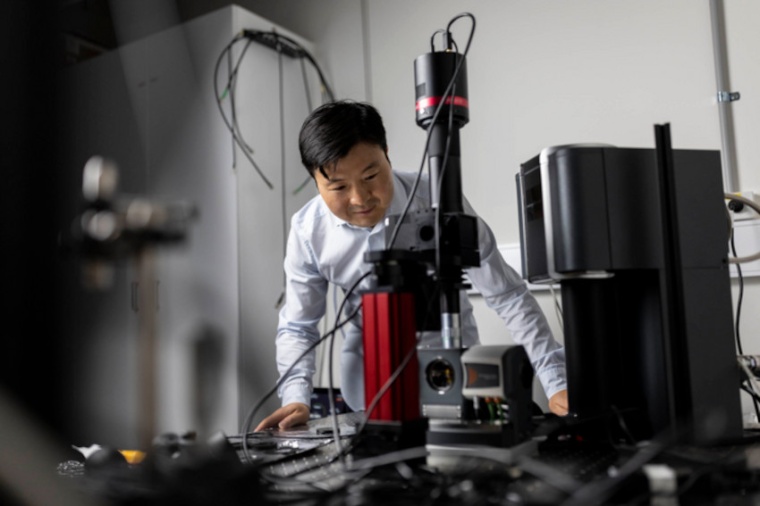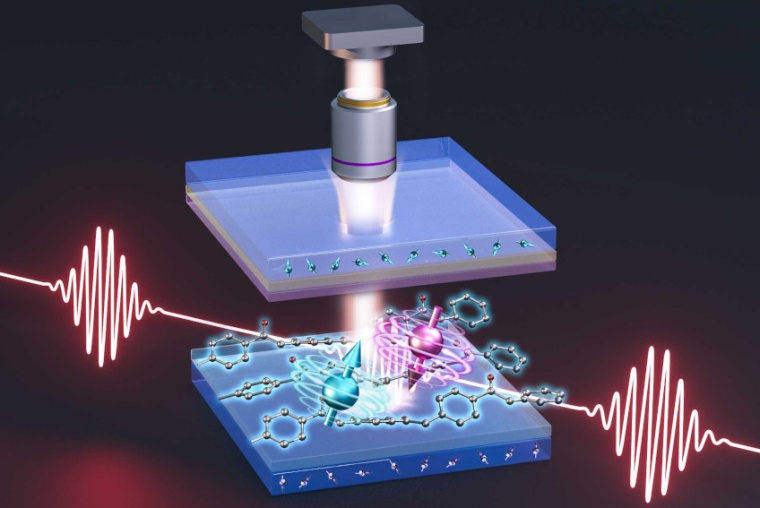Quantum sensing in your pocket
OLEDs can be used to map magnetic fields using magnetic resonance.
Smartphones could one day become portable quantum sensors thanks to a new chip-scale approach that uses organic light-emitting diodes (OLEDs) to image magnetic fields. Researchers from the ARC Centre of Excellence in Exciton Science at UNSW Sydney have demonstrated that OLEDs can be used to map magnetic fields using magnetic resonance. Sensing of magnetic fields has important applications in scientific research, industry and medicine. This technique is able to function at microchip scale and does not require input from a laser.


The majority of existing quantum sensing and magnetic field imaging equipment is relatively large and expensive, requiring either optical pumping from a high-powered laser or very low cryogenic temperatures. This limits the device integration potential and commercial scalability of such approaches. By contrast, the OLED sensing device prototyped in this work would ultimately be small, flexible and mass-producible. The techniques involved in achieving this are electrically detected magnetic resonance (EDMR) and optically detected magnetic resonance (ODMR). This is achieved using a camera and microwave electronics to optically detect magnetic resonance, the same physics which enables magnetic resonance imaging (MRI).
Using OLEDs for EDMR and ODMR depends on correctly harnessing the spin behaviour of electrons when they are in proximity to magnetic fields. OLEDs, which are highly sensitive to magnetic fields, are already found in mass-produced electronics like televisions and smartphones, making them an attractive prospect for commercial development in new technologies. Dane McCamey of UNSW said: “Our device is designed to be compatible with commercially available OLED technologies, providing the unique ability to map magnetic field over a large area or even a curved surface. You could imagine using this technology being added to smartphones to help with remote medical diagnostics, or identifying defects in materials.” Rugang Geng added: “While our study demonstrates a clear technology pathway, more work will be required to increase the sensitivity and readout times.” (Source: ARC / UNSW)
Link: ARC Centre of Excellence in Exciton Science, School of Physics, UNSW Sydney, Sydney, Australia
most read

Successful conclusion of the IVSM Fall Meeting 2025 in Haikou, China
The 2025 Autumn International Vision Standards Meeting (IVSM) took place from November 3 to 7 in Haikou, Hainan, and attracted over 120 R&D engineers worldwide.

Teledyne Vision Solutions: Camera manufacturer unifies machine vision portfolio
Teledyne combines the various machine vision technologies, including 1D, 2D and 3D cameras, under the umbrella of "Teledyne Vision Solutions".

United Robotics Group restructures
The company focuses on the healthcare industry and innovation.

HMS Networks takes over Industrial Communications division from Molex
This strategic acquisition includes intellectual property in hardware and software, a product portfolio with network cards and software stacks, as well as customer relationships in the USA and Japan.

Qioptiq Photonics becomes Excelitas Germany
The renaming is part of the global consolidation of the Excelitas Group.






